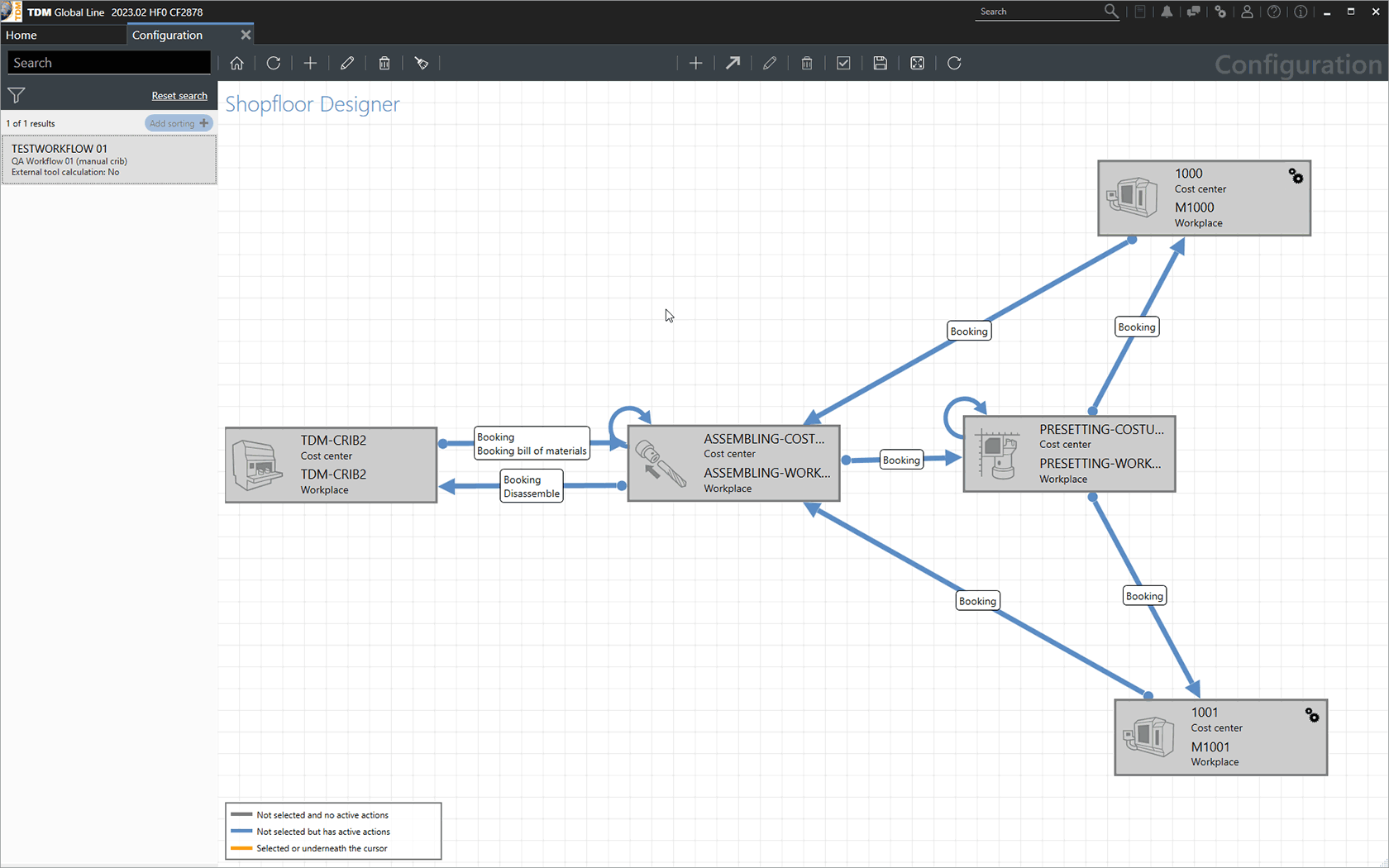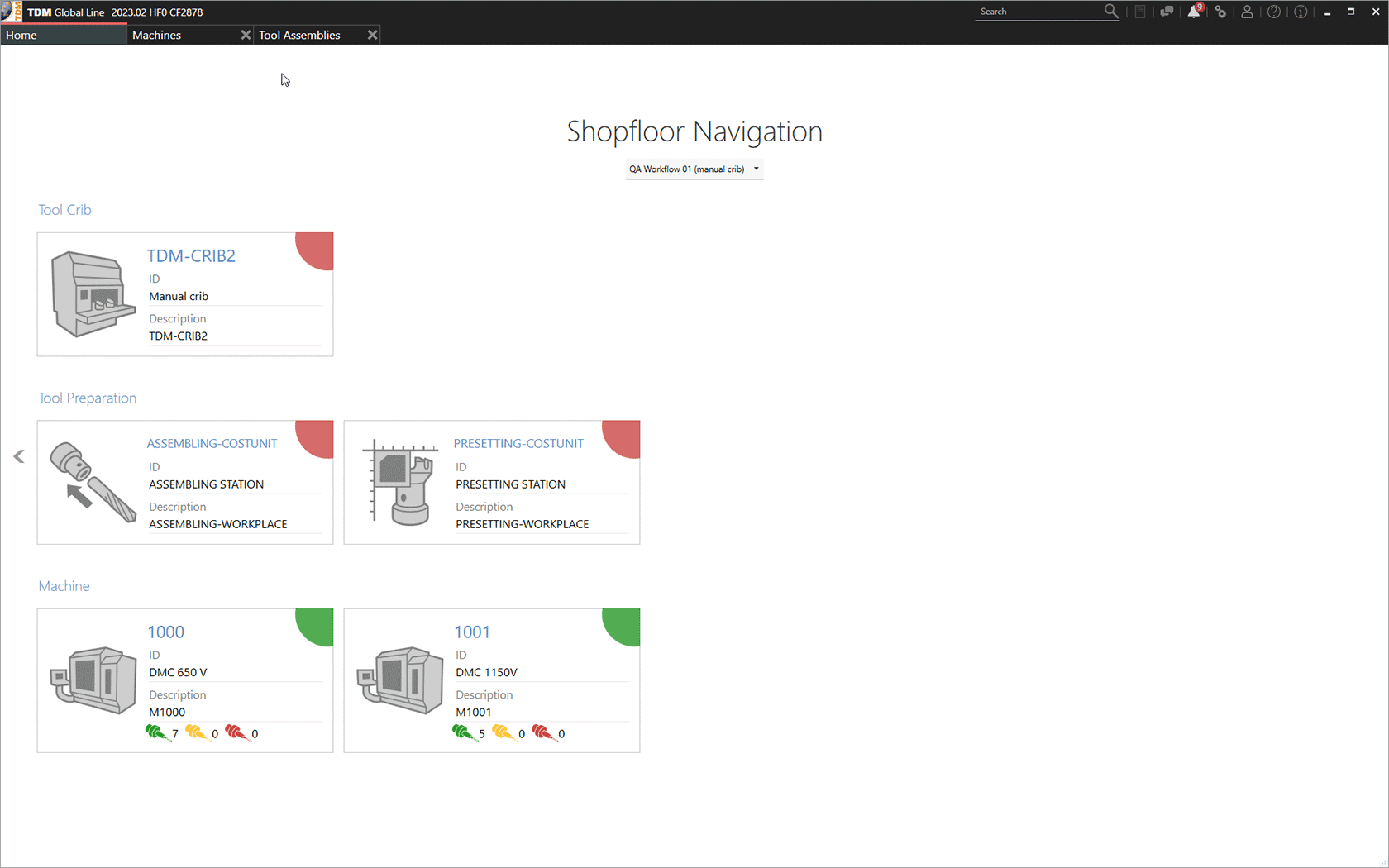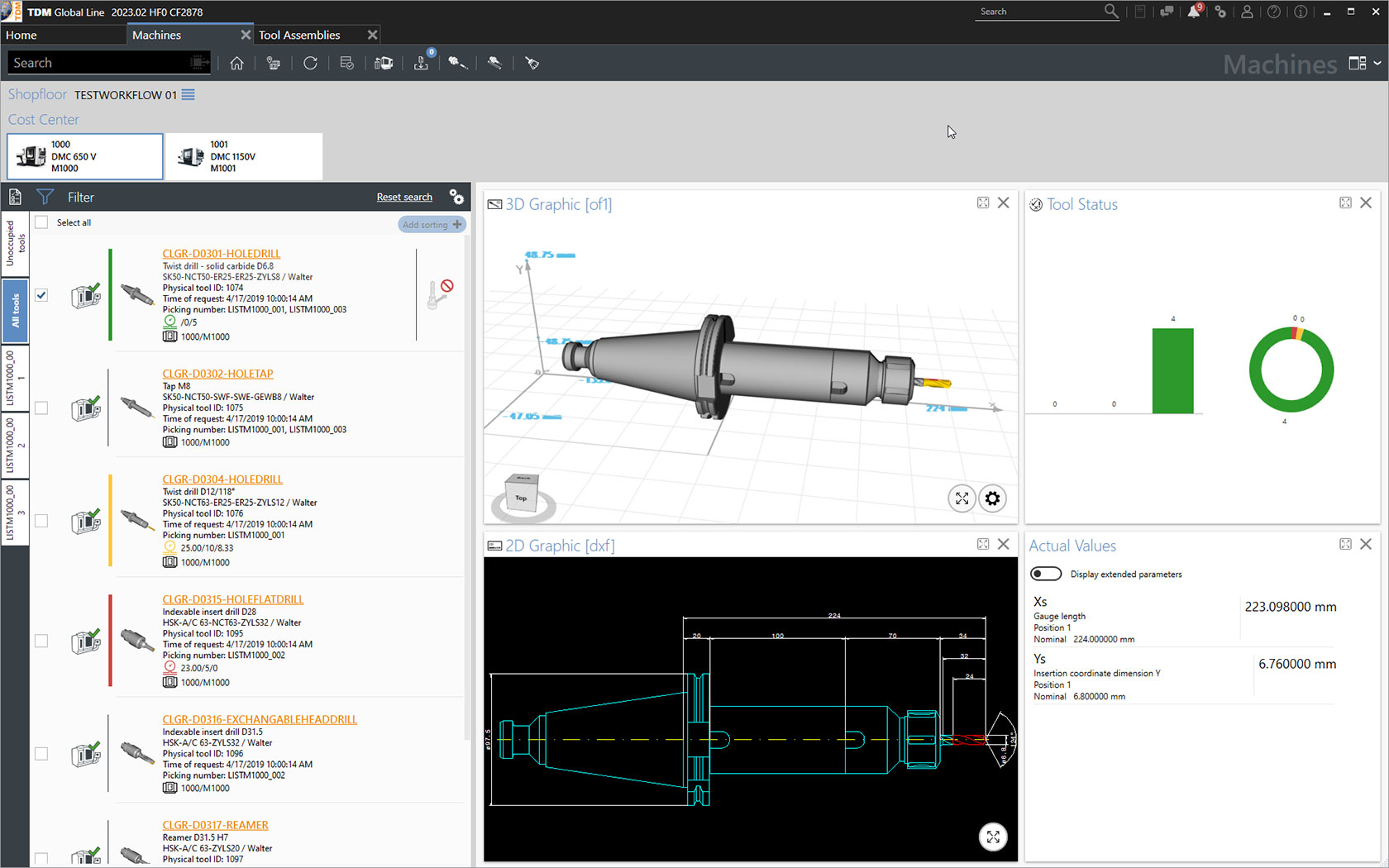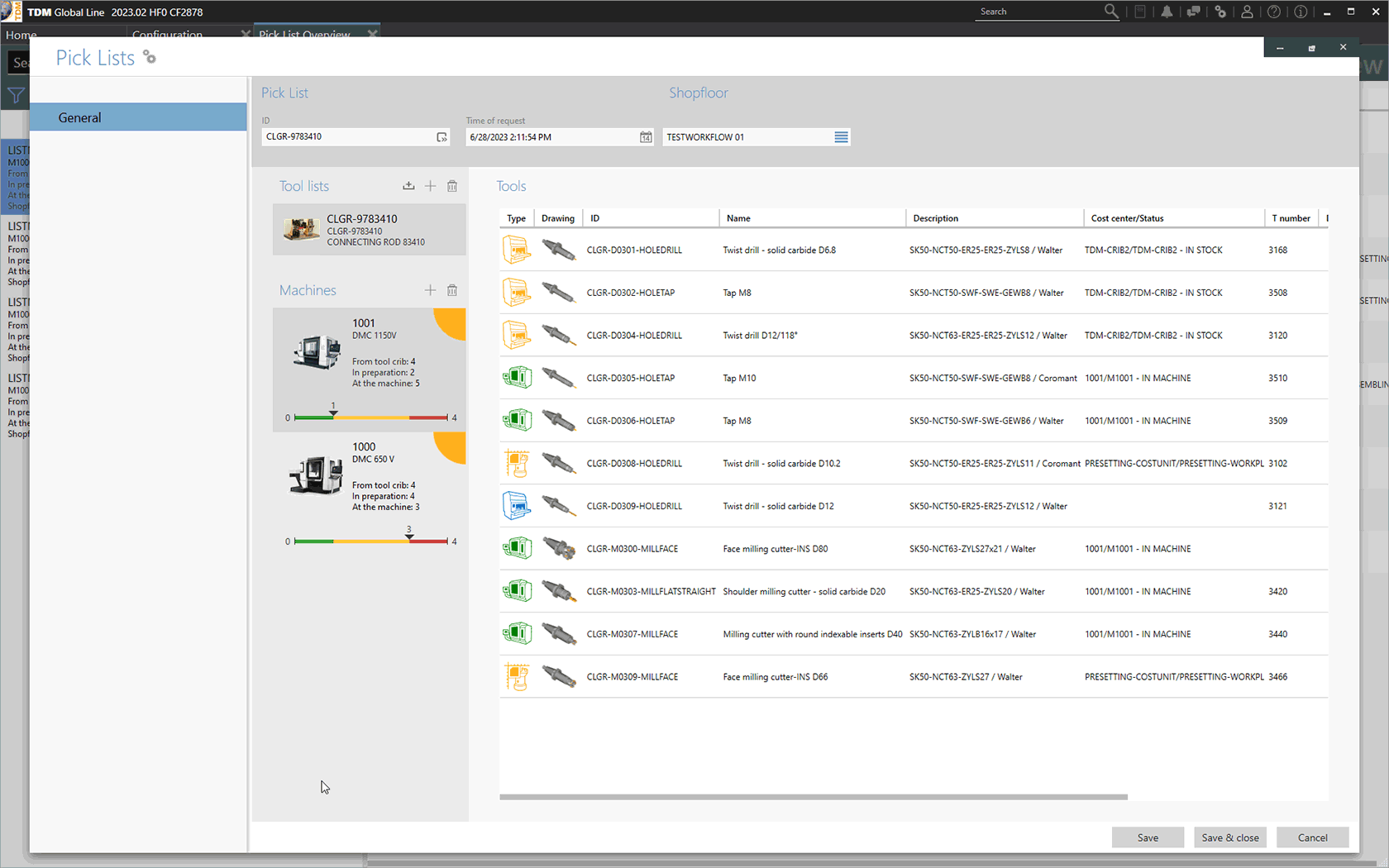"With the Shopfloor Manager in TDM Global Line , customers can compile all workflows individually with the help of a configurator." For Stefan Mayer, Senior Consultant at TDM Systems, this means that the days of adapting production processes to inflexible software are over. Consistently modular in design, Shopfloor Management adapts to the individual circumstances on a shopfloor. The tool list forms the basis for every calculation of requirements. "Whether it's orders, individual workpieces or NC programs, ultimately everything is broken down into tool lists".
The user's situation is the crucial factor
From the very beginning, the development of the TDM Shopfloor Manager focused on the situation and needs of the process participants. Different data is required throughout the entire process chain. Any process participant should have access to exactly the data and information that they need for their tasks. In addition to the user situation, the real tool circulation is also in focus. This results from the respective configuration. Typically, this involves a crib, a presetting device and a machine, whereby tasks are assigned to each of these areas. This is usually typical in a shopfloor – but not universal. Mayer: "Many companies combine assembly and presetting together in a tool room, for example. In this case, both areas can be combined to form a 'Tool Room' cost center, whereby all actions are carried out in a single screen."
Further real-life examples: Tool calibration is usually integrated into turning machines; in the case of milling or drilling machines, this takes place using presetting devices outside the machine. Some machines nowadays automatically calibrate their tools themselves, while other machines do not. Previously, tools had to be placed in the crib after use, despite the fact that they should be kept close to the machine if they are needed again. All of this can be displayed precisely in the TDM Shopfloor Manager.
Everything freely configurable
Thanks to its modular design, the software is freely configurable without having to adapt the programming. Mayer: "This way, the software follows the process, not the other way round." This flexibility also drastically reduces the effort involved in making individual adaptations. At least 80% of customer requirements can be covered as standard. Too much flexibility can lead to errors, however, if processes are combined in the wrong sequence. This is prevented by an integrated plausibility check, which only permits plausible sequences, so only those sequences that are plausible are preselected," promises Mayer.
Software that guides users through workflows
All actions to be carried out are displayed in the form of to-do lists so that employees can work through their tasks in the correct order. Additional tasks can easily be added to the sequence at any time. Users can configure the state-of-the-art user interface according to their own requirements and preferences. In addition, there is the option to use the web browser to access the required functions, so that the necessary applications are available at any time and anywhere in production – even on tablets.
The TDM Shopfloor Manager is fully compatible with the inventory management function of the TDM Tool Crib Module Global Line. This means that tool assemblies in secondary cribs and near the machine can also be managed. As such, employees always know exactly where the tool assemblies are and what condition they are in. Disassembling, reassembling and presetting are no longer strictly necessary, saving significant time and costs. Thanks to the integration of identification technologies for the tools, such as RFID, DMC or barcode, the individual tools can be identified as a unique specimen. "This gives every user the clearest possible overview and data transparency in the tool circulation," says Stefan Mayer proudly.
MCC: Requirements planning 4.0
With "Machine Control Connect" (MCC), TDM Systems enables machine tools, with their diverse range of controllers, to send and receive information via APIs (Application Programming Interfaces). The TDM Shopfloor Manager technically integrates the machines into the automated workflow in this way.
There are several advantages to this. Employees now know not only which tools are in the machine, but also what specific condition they are in. This knowledge flows directly into the calculation of requirements. It also saves a lot of time when replacement tools are needed quickly. If the real data from older or simpler machines is not available, a planning approach is adopted. Both processes can be mixed – requirements planning works in any case.
Analysis software can also determine how individual tools behave during certain operations and whether that matches the manufacturer's specifications. Data does not only flow in one direction. Data can also be sent to the machine.
In addition, orders which serve as the basis for calculating requirements can also be entered directly into TDM Global Line. It makes no difference whether these are entered manually or transferred from external systems such as an MES or ERP. TDM uses the information received to provide all of the necessary resources. After all, only TDM knows exactly which tools are in the machine and in what condition.
TDM is the focus of the shopfloor and is the data hub of machining production true to the motto – "Data is the New Energy".






